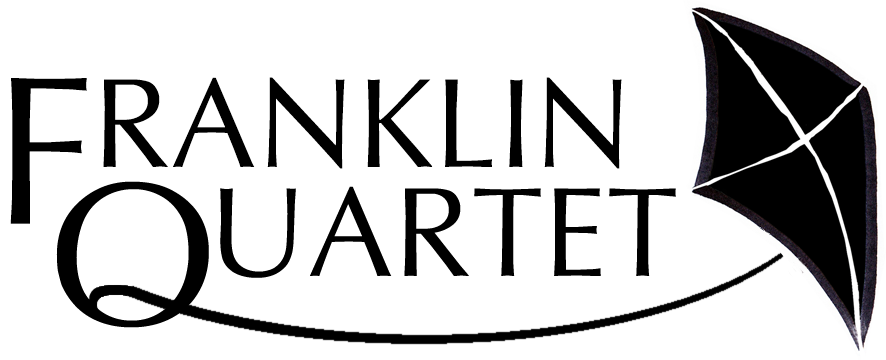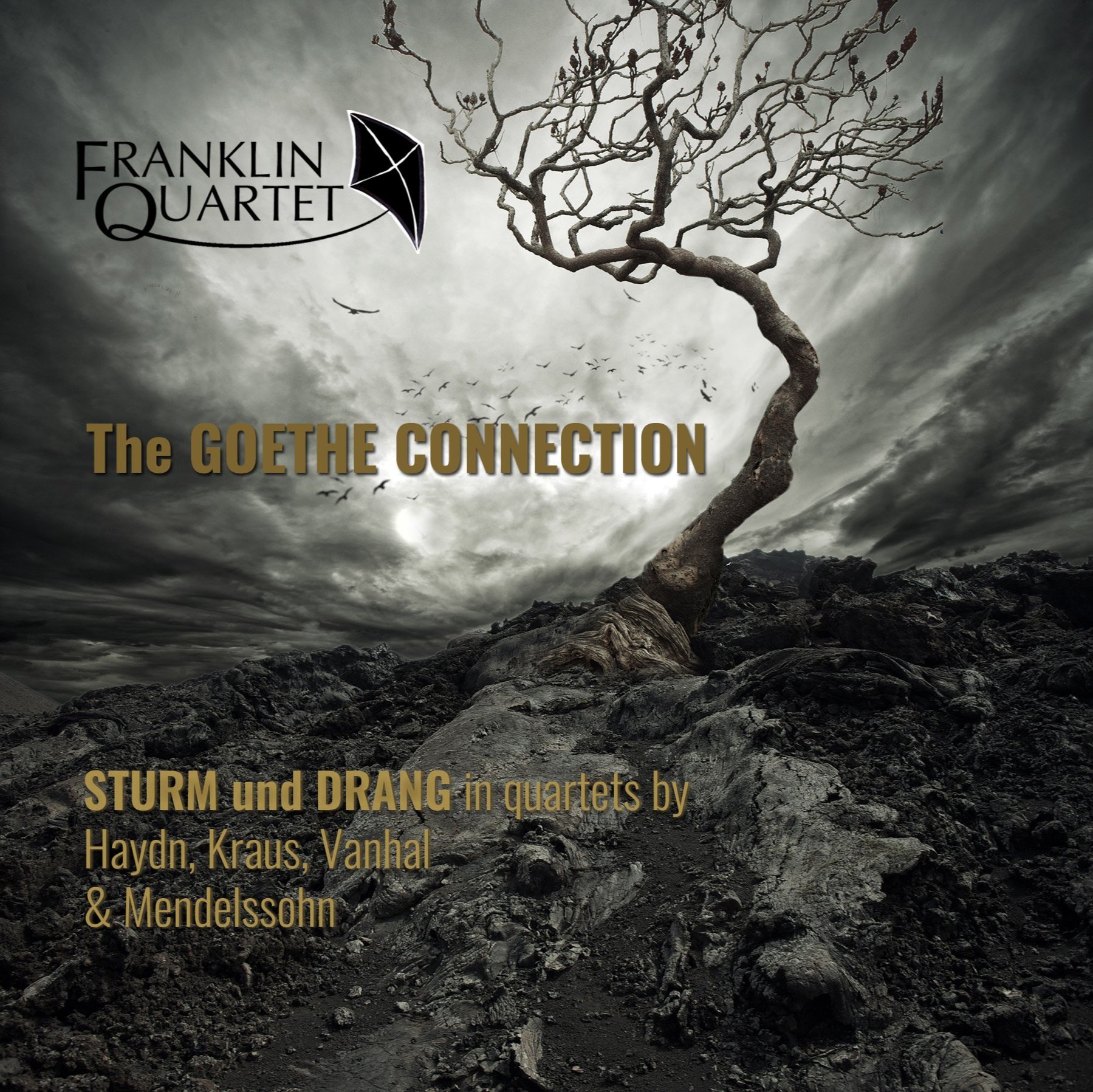Linnea Borealis
-
Linnea Borealis
It started with Linnea Borealis, the favorite Nordic flower of Franklin Quartet’s resident Finn, Marika. This led us to Swede Carl Linnaeus, the 18th century genius biologist and father of taxonomy who, like Marika, loved the flower. From there we became acquainted with Linnaeus’ star student Peter Kalm. Not only did he hail from Marika’s Finnish stomping grounds, but he also became a teacher of one of her ancestors. He sailed to Philadelphia in 1748 where he became good friends with Benjamin Franklin. Peter Kalm also established close connections with the church of Weekacko, aka Old Swedes, where Franklin Quartet will present this concert. Join Franklin Quartet in celebrating these amazing connections and let us take you on a musical journey of rarely heard 18th and 19th Century Swedish Quartet repertoire pearls by Amanda Maier-Röntgen, Joseph Martin Kraus, and Franz Berwald.
-
Joseph Martin Kraus (1756-1792)
Quartet in G minor, “Fugenquartett” (the “Fugue Quartet”),
Opus 1, No. 3, VB² 183 (1777)
Andante comodo — Adagio — Tempo primo
Romanze
Tempo di Minuetto
Franz Berwald (1796-1868)
From Quartet in G minor, No. 1 (1818)
Poco Adagio
Amanda Maier-Röntgen (1853-1894)
From Quartet in A major (1877)
Andante
Scherzo. Allegro non troppo
Joseph Martin Kraus
Quartet in D major, “Abschiedsquartett” (the “Farewell Quartet”),
Opus 1, No. 4, VB² 184 (ca. 1777)
Allegro
Larghetto
Allegro Molto
Total timing: +/- 60min
We Women
-
We Women
The prejudice about women’s creative abilities in the 18th and 19th centuries was largely a direct result of writings of leading European political/philosophical figures such as Jean Jaques Rousseau and Immanuel Kant. In 1758 Rousseau wrote:
“Women in general possess no artistic sensibility . . . nor genius. They can acquire a knowledge . . . of anything through hard work. But the celestial fire that emblazons and ignites the soul, the inspiration that consumes and devours . . . these sublime ecstasies that reside in the depths of the heart are always lacking in women’s writings. These creations are as cold and pretty as women”.
Being a girl prodigy in that time, to say the least, was not easy. While some girls would grow up to perform for family and friends, it was not considered appropriate for them to pursue music academically or professionally. It was not unknown that some girls would receive an academic education, but the motive behind that was for the families to achieve a higher societal status. After the young talented women finished their studies, often at the top of their class, they were married off and returned to performing and/or composing within the confines of the in-home “salon culture.”
In “We Women” Franklin Quartet brings forward poet Edith Södergran and composers Fanny Hensel, Emilie Mayer, Amanda Maier-Röntgen, and Maddalena Lombardini Sirmen. These five remarkable women, all European but hailing from countries as diverse as Finland, Sweden, Germany and Italy, refused to become ornaments. In the face of daunting odds and rigid societal norms, they fought for their art and the root of their being for their entire lives. Join us in reveling in their breathtaking genius.
-
Poems by Edith Södergran (1892-1923)
Emilie Mayer (1812-1883)
From Quartet in G Minor, Op. 14, No. 1
I. Allegro appassionato — II. Scherzo. Allegro assai - Trio. Un poco più lento
Maddalena Lombardini Sirmen (1745-1818)
Quartet No. 3 in G Minor
Tempo giusto — Allegro - SostenutoAmanda Maier-Röntgen (1853-1894)
From Quartet in A major
III. Scherzo. Allegro non troppo
Fanny Hensel (1805-1847)
Quartet in E-flat Major
Adagio ma non troppo — Allegretto — Romanze — Allegro molto vivace
Total timing: +/- 60min
Nomadic Rhapsodies
-
For centuries, Western Europe has viewed the Ottoman Turks and Romani as exotic. Relative to the rest of Europe they were geographically nearby but remote in custom. It was perceived that their music evoked sensualism and voluptuousness as well as something dangerous and menacing. 18th century composers were tickled to bring these foreign musical elements into their works. No matter how fleeting those musical moments may have been in the context of broader compositions, they elicited images of the “exotic” or “otherness.” How should we respectfully observe this in today’s modern society? As alluring as those snippets are, they don’t exist without controversy. Join the Franklin Quartet as we explore the Ottoman Empire and Romani influence in string quartets by Haydn and Dittersdorf interspersed with traditional Armenian folk tunes.
-
Carl Ditters von Dittersdorf (1739 - 1799)
Quartet No. 5 in E-flat major, Kr. 195Allegro — Menuetto: Non troppo presto/Alternativo — Finale: Allegro
Komitas Vartabed (1869 - 1935)
A Selection of Armenian Folk Songs
The Red Shawl — Echmiadzin Dance — Girl’s Dance — Festive Song
Franz Joseph Haydn (1732 - 1809)
Quartet No. 2 in C major, Op. 54
Vivace — Adagio — Menuetto: Allegretto — Adagio/Presto/Adagio
Total timing: +/- 60min
Northern Lights
-
Explore Scandinavia in this program of rarely heard treasures for string quartet from the land of the midnight sun. Curated by the Franklin Quartet’s resident Finn, Marika Holmqvist, Northern Lights presents music by Haydn’s neighbors to the north, including Kraus, nicknamed ‘the Swedish Mozart’, and Wikmanson whose quartets where greatly admired by none other than Haydn himself.
-
Mix ‘n’ Match Quartet No. 1
The Swede: Joseph Martin Kraus (1756-1792)
Quartet in C minor, VB 179Largo - Andantino – Allegro
The Finn, Erik Tulindberg (1761-1814)
Quartet in D minor, No. 2Minuetto
Joseph Martin Kraus
Quartet in D major, Op. 1, No. 4, VB 184Allegro molto
INTERMISSION
Mix ‘n’ Match Quartet No. 2
Erik Tulindberg
Quartet in G major, No. 4Allegro assai
The Swede, Johan Wikmanson (1753-1800)
Quartet in D minor, Op. 1, No. 1Adagio
The Swede, Joachim Nicolas Eggert (1779-1813)
Quartet in G majorMenuetto
Erik Tulindberg
Quartet in D minor, No. 2
Allegro
Total time: +/- 60min of music
Chiaroscuro
-
In the hands of the eighteenth century's finest musical minds, the string quartet came to life in an outpouring of expression at once dazzling and dramatic, beguiling and bold. Experience the sweeping emotional language of the early string quartet "Chiaroscuro," featuring works written by Mozart, Haydn and Boccherini at their creative peaks, performed by the Franklin Quartet.
-
Franz Joseph Haydn (1732-1809)
Quartet in E-flat major “The Joke”, Op. 33, No. 2
Allegro moderato – Scherzo – Largo e sostenuto – Finale/Presto
Luigi Boccherini (1743-1805)
Quartet in C major, Op. 2, No. 6
Allegro con spirito – Largo – Minuetto e Trio
Franz Joseph Haydn
Quartet in F minor, Op. 20, No. 5Moderato – Menuet – Adagio – Finale: Fuga a 2 soggetti
INTERMISSIONWolfgang Amadeus Mozart (1756-1791)
Quartet in G major, K. 387, No. 14
Allegro vivace assai – Menuetto – Andante cantabile – Molto Allegro
Total time: 60 min. of music
Ben in Paris
-
When Benjamin Franklin arrived in Paris on December 21st, 1776 he was considered the best known American in the world. He quickly became the talk of the town. Everyone wanted a piece of his wit, his intelligence and good company. He became a prominent fixture at the Parisian high society salons where he could be found comingling with composers on this afternoon’s program; Chevalier de Saint-Georges, Gossec, Rigel and Mozart. Franklin Quartet wishes to transport you to one of these fascinating musical salons. It could be at the Petit Appartement de la Reine at the Palace of Versailles, hosted by Queen Marie Antoinette, or at one of the grand houses of Ben’s favorite ladies, Mme Brillon and Mme Helvetius – you can decide for yourself! Let us take you on a musical and narrative journey to Ben’s Paris!
-
Joseph Bologne Chevalier de Saint-Georges (1745 - 1799)
Quartet in G major, No. 5, Op. 14
Allegro assai – Gratioso
François Joseph Gossec (1735 - 1829)
Quartet in E major, No. 5, Op. 15
Larghetto – Englese
Henri-Joseph Rigel (1741 - 1799)
Quartet in A minor, No. 6, Op. 10
Allegro – Siciliano – Grazioso
Wolfgang Amadeus Mozart (1756 - 1791)
Quartet in C major "Dissonance," No. 19, KV. 465
Adagio/Allegro – Andante Cantabile
Total time: 48:48
The Goethe Connection
-
The Sturm und Drang movement (1760s-1780s), with Goethe in the forefront, came to be associated with literature or music aimed at shocking the audience and moving them to extremes of emotion. The principal driver of the movement was rebellion against the constraints and rational ideals of the Enlightenment. In “The Goethe Connection” the Franklin Quartet explores the ways Haydn, Mendelssohn, Kraus and Vanhal embrace of this ethos.
-
Franz Joseph Haydn (1732-1809)
Quartet in G minor, Op. 20, No. 3Allegro con spirito – Minuetto/Allegretto – Poco adagio – Finale/Allegro di molto
Johann Baptiste Vanhal (1739-1813)
Quartet in C minor, No. 1
Allegro moderato – Adagio – Minuetto – Allegro
Joseph Martin Kraus (1756-1792)
Quartet in C minor, VB 179
Largo – Andantino
Felix Mendelssohn (1809-1847)
Quartet, Op. 81, No. 7
Capriccio: Andante con moto/Allegro fugato
Total time: 60 min.
Archived Portfolio
By George!
-
Pathos and passion, explosive international politics, extravagance, and dramatic deaths – the lives of England’s King Georges are enough to make even the most unshakeable historian exclaim ‘by George!’ Discover the Britain’s other Fab Four through the lens of English and German quartets of the Georgian era, presented by the Franklin Quartet, with a lecture from the Franklin’s own British subject, violinist Rebecca Harris.
-
William Boyce (1711-1777)
Symphony No. 6
Largo – Allegro
Georg Philipp Telemann (1681-1767)
Sonata in A major
Affettuoso – Allegro
William Shield (1748-1829)
Quartet in C minor, Op. 3, No. 6Allegro
Samuel Wesley (1766-1837)
Quartet in E-flat majorAdagio con moto
Samuel Wesley
Quartet in E-flat major
Finale: Allegro molto
William Shield
Quartet in C minor, Op. 3, No. 6
Adagio
George Onslow (1784-1853)
Quartet in G minor, Op. 9, No. 1Allegro risoluto ma non troppo presto – Andante Religioso: “God Save the King”
Total time: 60 min.









